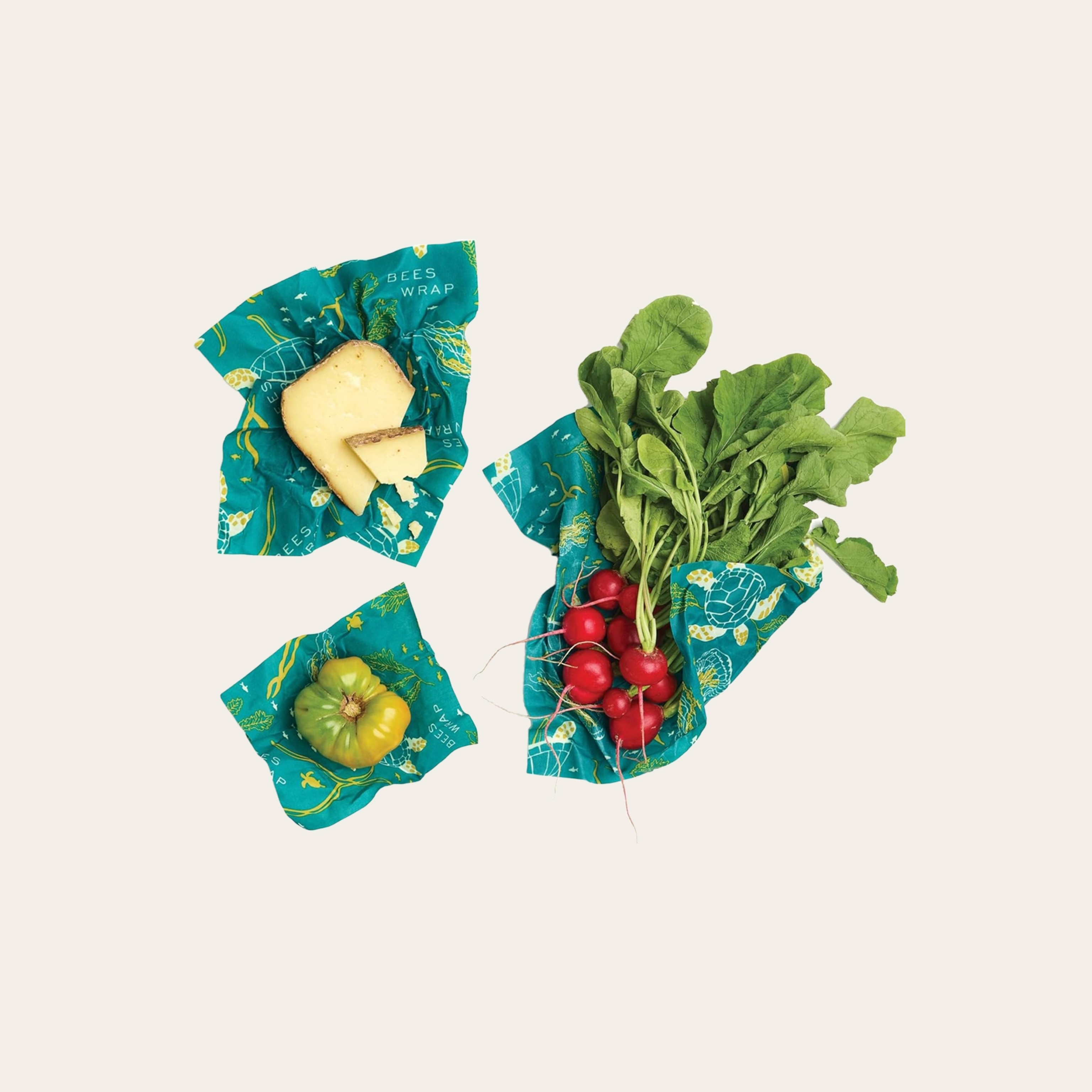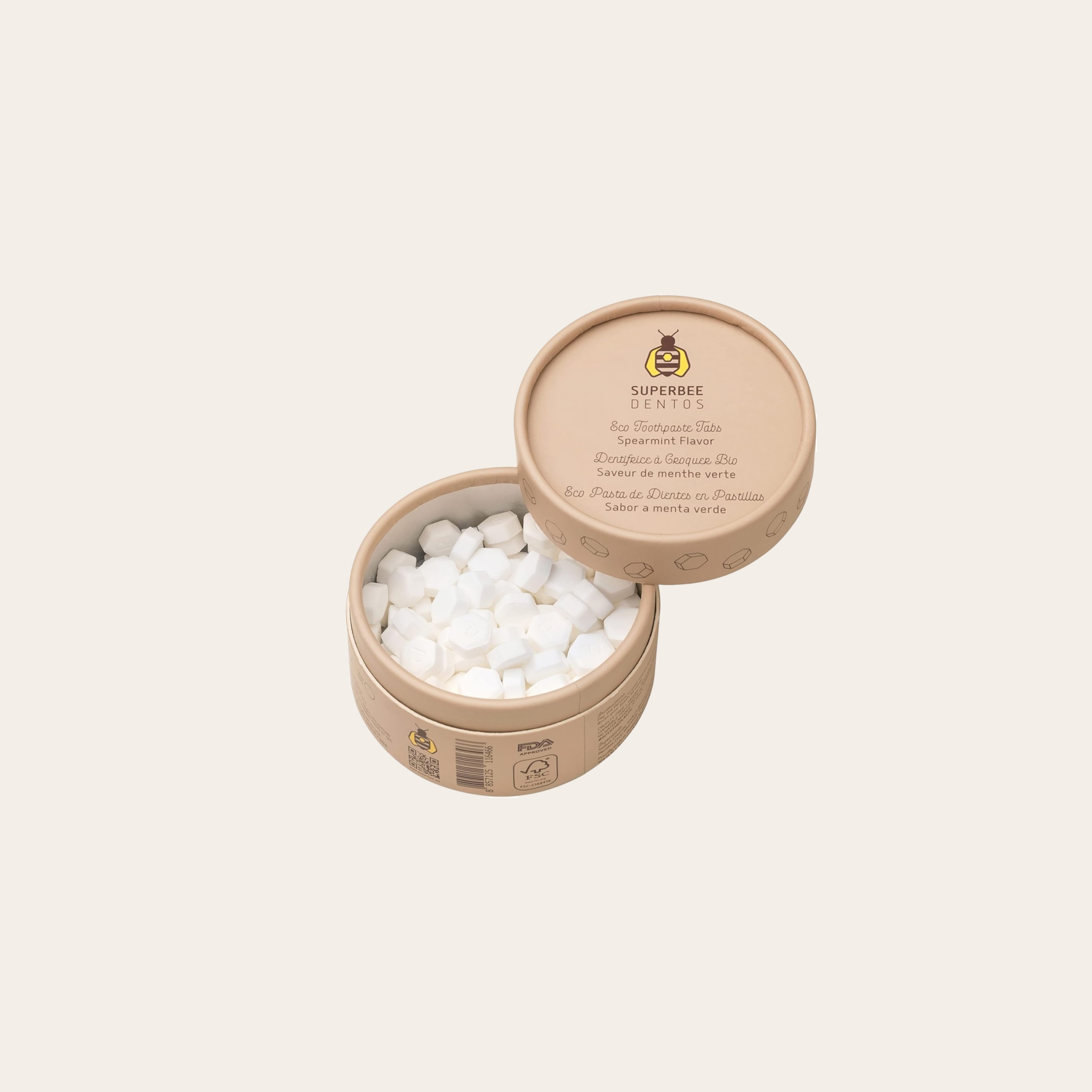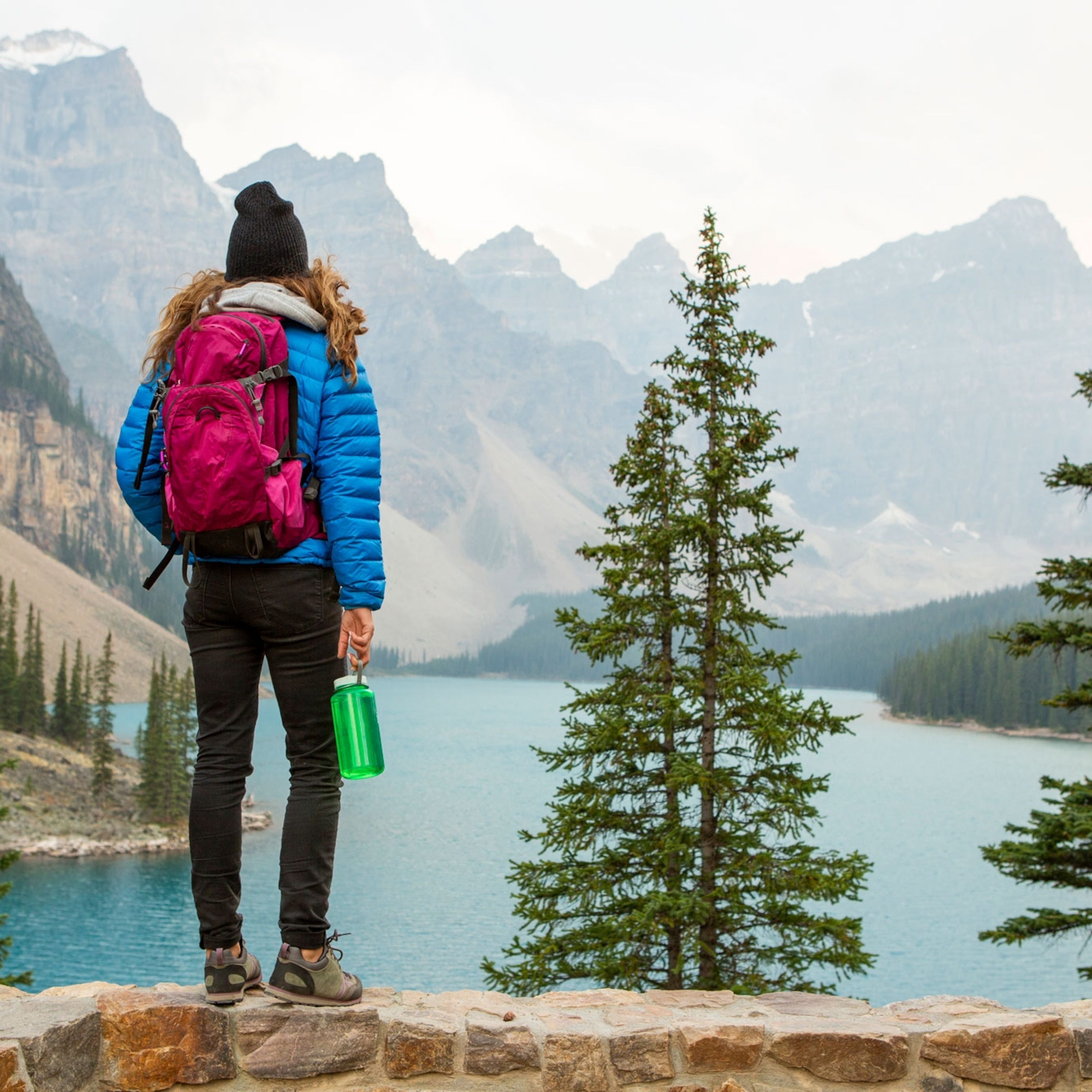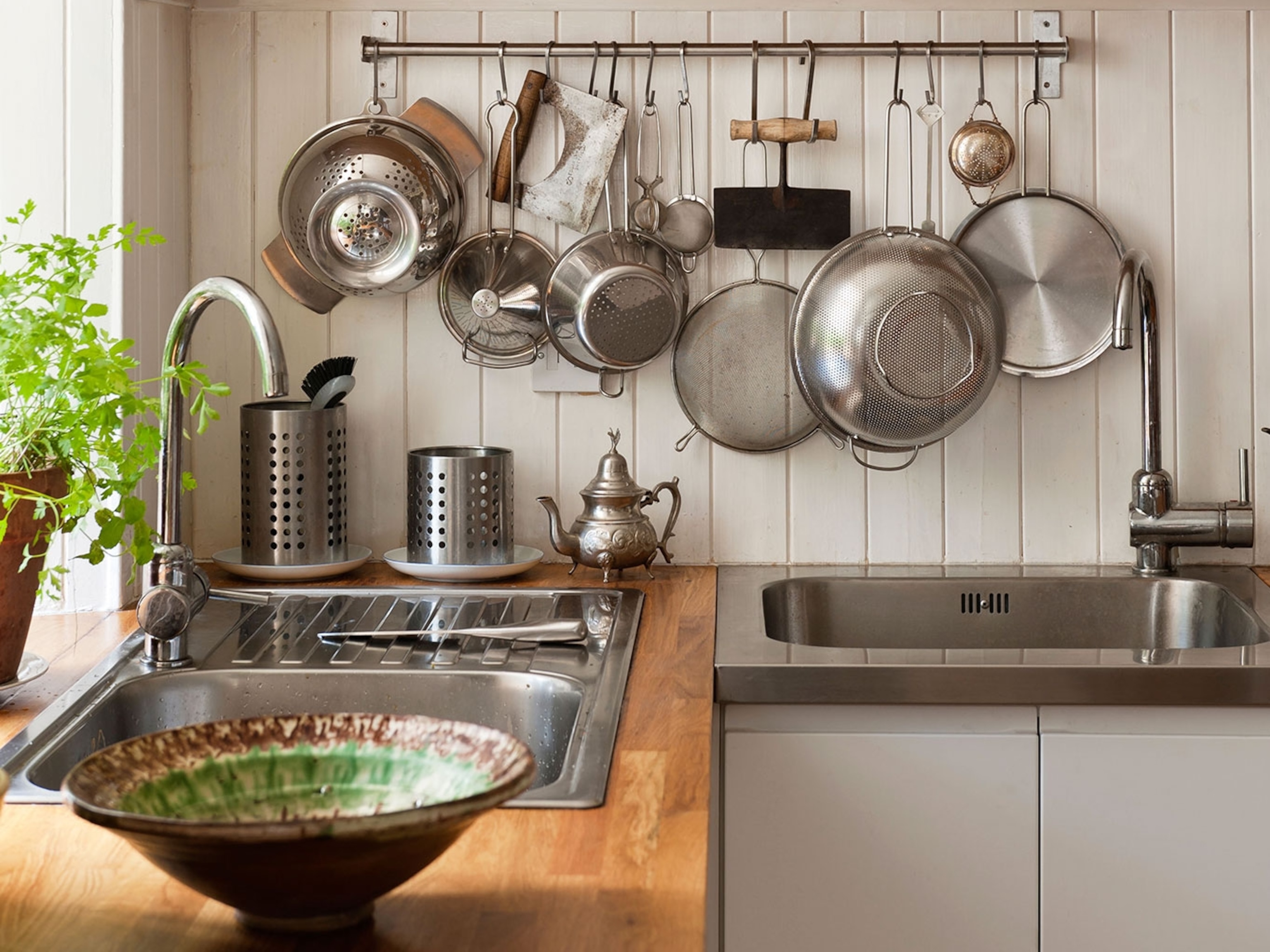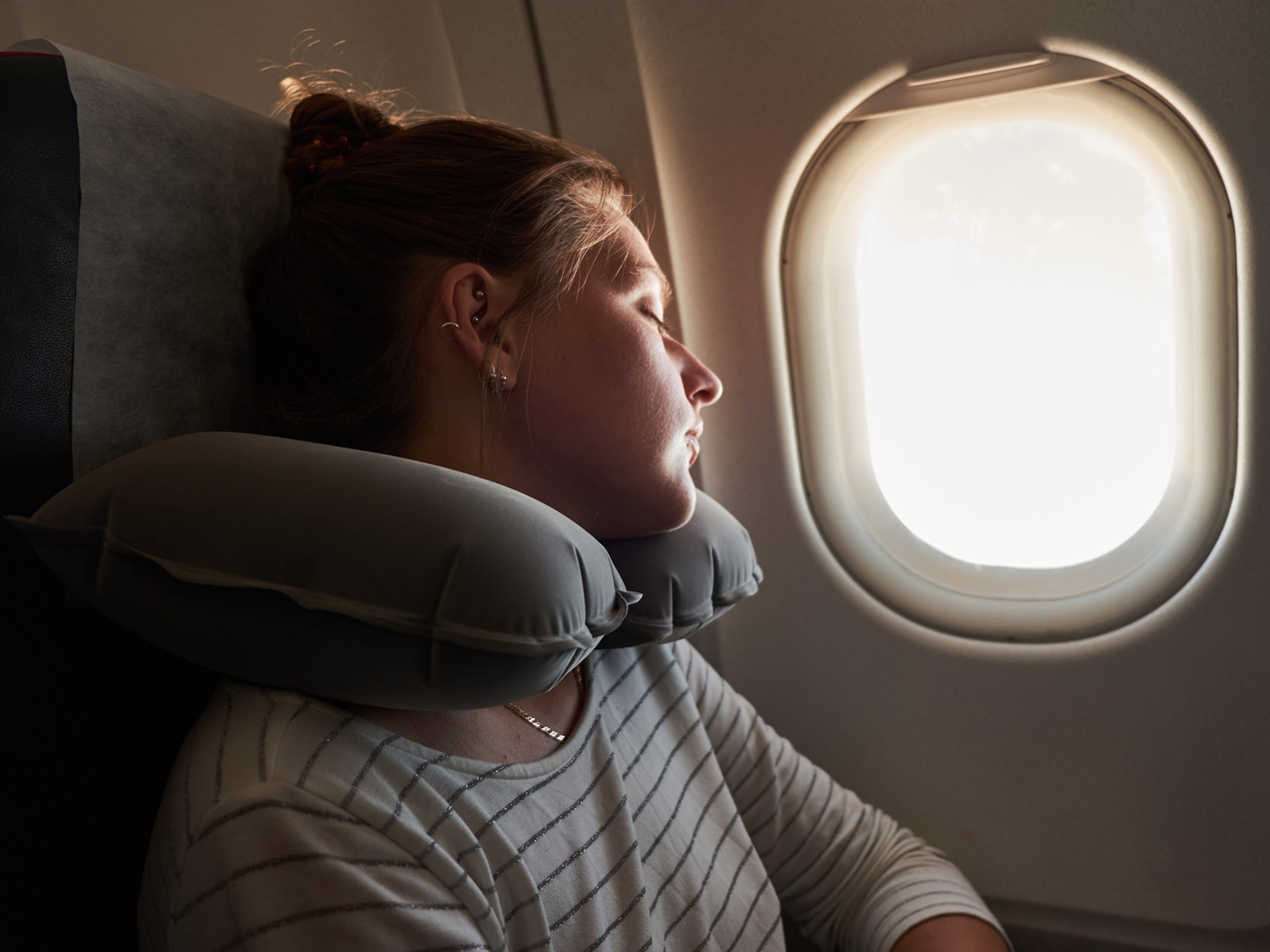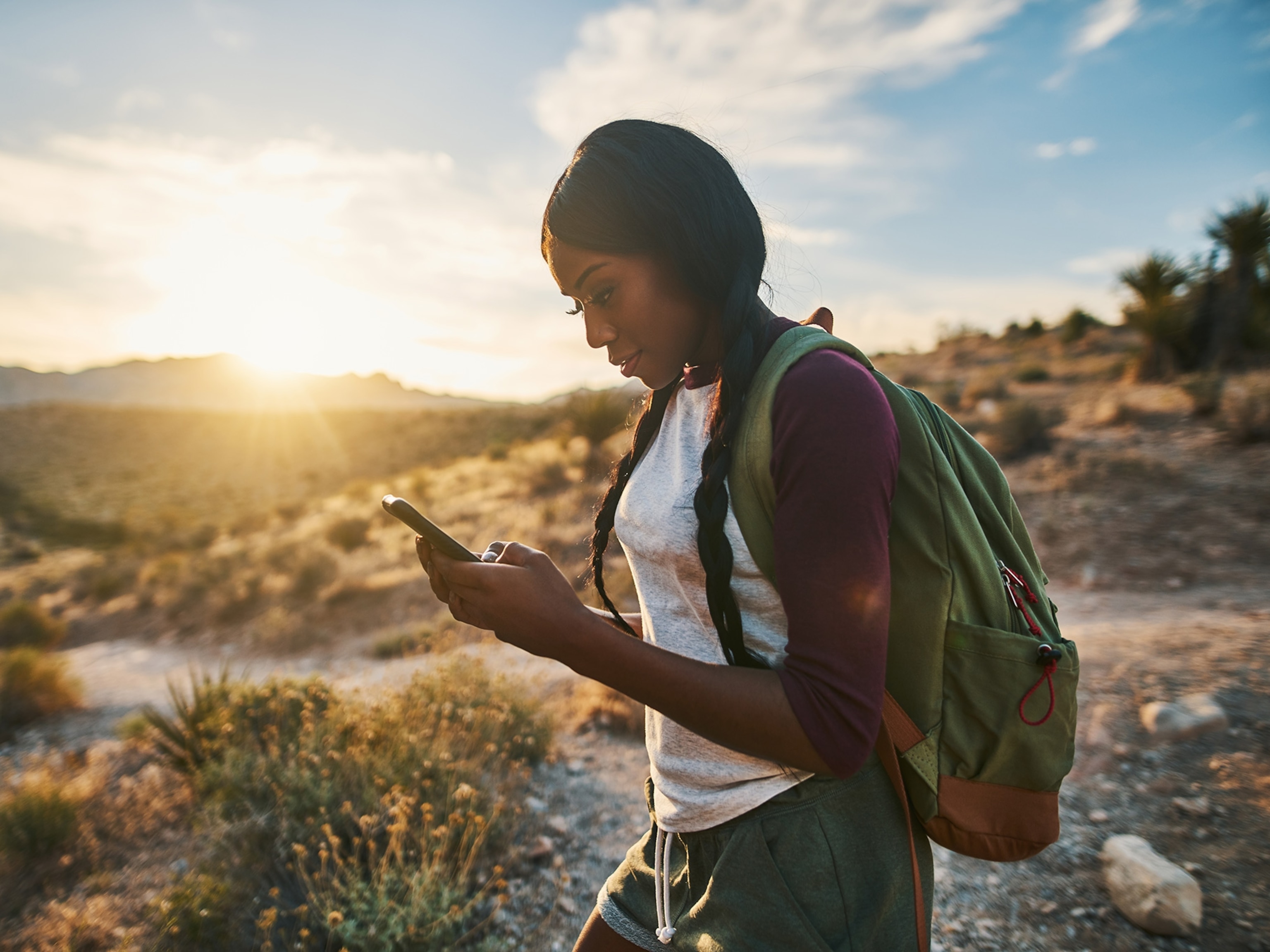6 easy ways to avoid plastic while traveling
It may seem daunting, but travelers can reduce their reliance on single-use plastics. Here are our expert tips and product swaps.

It’s no secret that single-use plastic harms both our bodies and the environment. It’s a global crisis, but more and more people are practicing sustainable living. When it comes to avoiding plastic while traveling, however, there’s more to consider.
According to Emese Maczko, an eco-travel writer and the founder of Eco Lodges Anywhere, it all starts with thoughtful packing.
“Since I have a toothbrush at home, why would I need a new one for this trip?” she asks. “If I have a reusable water bottle at home, why buy water at the airport in single-use plastic containers? Airlines and airports allow reusable bottles, provided they are empty when you go through security checks.”
You may also need to rethink your buying practices. “Travelers often believe that while on vacation, they can splurge without consequences,” she says. “This mindset leads to buying new drinks wherever they are, opening all available bathroom amenities even without the intention to use them, accepting every freebie they are offered, and purchasing numerous trinkets.”
Avoiding plastic while traveling may seem daunting, but we have a few easy steps to get you started, plus product swaps you can pack for any trip.
How to avoid plastic while traveling, step by step
Step 1: Ditch the plastic water bottles. Instead, pack a BPA-free insulated tumbler.
Step 2: Say no to single-use plastic bags and containers. Opt for reusable shopping totes, silicone storage containers, and other similar items.
Step 3: Choose “greener” hygiene products. From tampons to shampoo, lots of personal care items are plastic-free, right down to the packaging.
Step 4: Look into eco-friendly hotels and lesser known destinations. Book a resort or vacation locale with a track record for combatting climate change.
Step 5: Avoid disposable items and find reusable products instead. Just because something is “travel-sized” doesn’t mean it’s the best option for the planet.
Step 6: Give yourself some grace. If going completely plastic-free doesn’t feel possible for you, aim for progress, not perfection.
Step 1: Avoid buying plastic water bottles
Aside from being a major source of pollution, scientists say that plastic water bottles contain harmful microplastics small enough to ingest.
Brian Raffio, a senior adventure travel consultant at tour operator Climbing Kilimanjaro, suggests packing a reusable drink tumbler instead.
“While it may be ‘easier’ or more ‘convenient’ to purchase water at the airport, taking a few extra minutes to plan your carry-on in terms of reusability will ultimately go a long way,” he says, adding that most airports have water refilling stations.
Over time, reusable water bottles can also save you money. Look for one that’s stainless steel, made to prevent leaks, and compatible with most standard-sized cup holders.
(7 easy steps to reduce plastic in your kitchen.)
Step 2: Say no to single-use bags and containers
According to an Environmental Protection Agency report released in 2020 (the most recent available), Americans use roughly 4.2 million tons of plastic bags per year. Yet, only 10 percent are recycled. The rest typically find their way into landfills, oceans, or other parts of the globe, where it can take them from a couple decades to hundreds of years to decompose. In the meantime, plastic products pose serious risks for wildlife, who often ingest or become entangled in it.
That’s why reusable tote bags can have such a huge impact. Choose totes that are durable, lightweight, and fold up for storing in your carry-on or personal bag. Bonus points if they can be slung comfortably over your shoulder.
In addition to reusable bags, consider packing a set of silicone bags or food containers for eating out. These can reduce or eliminate the need for Styrofoam or plastic takeout boxes.
(Here’s how to shop more sustainably online.)
Step 3: Choose “greener” personal hygiene products
“Hygiene kits are the most tempting single-use travel products,” says Karimah Huddah, a sustainability expert and founder of Illumine.earth. Unfortunately, once those tiny plastic bottles are empty, most find their way into a landfill.
Huddah suggests dispensers designed to be leakproof or other products made to be more gentle on the planet. “There are amazing plastic-free products available now that you can use at home and while traveling,” she says, noting things like solid shampoos, body wash bars, and toothpaste tablets that come in packaging that aims to be “zero waste.”
We also like toothbrushes made from bamboo, a much more sustainable material that also decomposes much faster than a plastic one.
Step 4: Look into eco-friendly hotels and destinations
Sustainable travel has become a growing movement, with many cities, resorts, and even destinations pledging efforts to reduce carbon footprints.
Bryan Murphy, owner of Hawaii’s Best Travel, suggests booking travel according to how eco-sensitive a resort and/or destination may be. That way, some of the work is done for you.
“Stay at hotels committed to reducing plastic waste, such as those offering refillable toiletry dispensers and avoiding plastic packaging,” says Murphy. “In places like Hawaii, minimizing plastic waste is crucial to protect marine life and maintain the pristine beauty that attracts visitors worldwide.”
However, it’s also important to avoid “greenwashing.” You can check for sustainability certifications with global organizations such as Green Key, Green Globe, or EarthCheck. Tourism councils now list these certifications and/or include information on sustainability practices too.
The Environmental Performance Index (EPI) rates countries on general sustainability practices. Environmentalists also recommend understanding the seven principles of Leave No Trace, for minimizing environmental impacts outdoors.
(50 places to stay if you care about the environment.)
Step 5: Steer clear of disposable items in general
This is easier said than done, but it’s a huge part of reducing overall plastic use, not just while traveling.
It can help to plan by thinking through your daily itinerary. Identify areas where you can swap plastics for something else or find workarounds to avoid them.
If you enjoy a cup of coffee on the go, for example, ask the barista to fill your reusable cup or tumbler instead of a plastic or paper cup. If your plans involve eating at grab-and-go places, pack a travel-sized set of reusable utensils and a metal straw.
(Nat Geo’s Planet or Plastic project breaks down everything to know about plastic pollution.)
Step 6: Give yourself some grace
No matter how much planning you do, avoiding single-use plastic when you’re out in the world can be challenging. You may forget your reusable bag at the hotel, or maybe you don’t want to be weighed down by extra items on a shorter trip. That’s OK. What’s more important is doing what you can, when you can.
Packing checklist for avoiding plastic while traveling
It can be challenging to think of all the ways to avoid plastic while traveling. To help, we’ve put together a list of plastic-free alternatives that are easy to incorporate into your gear. Before you buy, follow our tips for shopping more sustainably online.
1. HydroFlask Wide Mouth Stainless Steel Water Bottle
If you’re going to use your water bottle every single day, you might as well go with a fan favorite. More than 26,000 Amazon customers gave this HydroFlask five stars, rating it for durability, ease of use, and leak-proof design. The stainless steel construction keeps drinks cool for 24 hours and hot for up to 12, according to the manufacturer. Plus, it’s dishwasher-safe and BPA-free.
2. Topbooc Portable Stainless Steel Flatware Set
For trips that involve hiking, camping, or simply eating on the go, a good cutlery set is a must. This eight-piece stainless steel set includes chopsticks, two reusable straws, and a cleaning brush all in a slim case.
3. Stojo Collapsible Cup with Straw
This collapsible travel cup was invented by a group of Brooklyn dads who wanted a sustainable option that was leakproof and portable. It’s made from lightweight silicone and comes in three sizes (12, 16, and 24 ounces). Microwave- and dishwasher-safe, it can hold hot and cold beverages and collapses down to two inches.
4. Bee’s Wrap Reusable Beeswax Food Wraps
From sandwich bags to cling wrap, so many of the items we use to wrap up leftovers and snacks are made from plastic. Beeswax food wraps can help break that cycle. This set of three sheets (small to large) is made from organic cotton and beeswax, according to the company. Customers say they’re durable, easy to wash, and have a great seal—better than plastic wrap, according to one review.
5. Baggu Reusable Totes
Lightweight and versatile, these handy bags can be used to haul groceries, laundry, or anything else—up to 50 pounds, according to the company. They’re made from recycled nylon, with enough clearance to comfortably sling over your shoulder.
“These bags pack up quite small and are great for trips to farmers markets—one of my favorite ways to get a taste of the local culture,” says Marianna Sachse, a long-time environmentalist and founder of the sustainable-minded kids’ clothing brand Jackalo.
6. Stasher Food Storage Bags
Stasher bags are great alternatives for small plastic baggies. They’re made from food-grade platinum silicone, but we like to use them for wrangling cords or other small travel gear. The Go Bag is a great starter piece. It comes with a carabiner that hooks on to a travel bag and can hold things like hand sanitizer or chapstick. We also like the seven-piece gift bundle, which has a variety of sizes for everything from snacks to toiletries.
7. Moodie Plant-Based Trash Bags
Compostable trash bags can be a real lifesaver when you’re traveling or camping. They’re perfect for dirty diapers, soiled clothes, or wet bathing suits. They’re even great as earth-friendly waste bags for pets. Each one has a fresh scent, is made to be leak-proof, and can hold up to 16 ounces. Just pop the roll inside Moodie’s waste bag dispenser, clip it onto your backpack, and you’re ready to go.
8. Dip Shampoo and Conditioner Bars
Dip Shampoo Bar
Dip Conditioner Bar
According to Dip, these shampoo and conditioner bars are made with organic ingredients that help nourish the scalp and promote healthy hair growth. We like that each four-ounce bar is wrapped in biodegradable packaging and hardly takes up space in your suitcase.
9. Sea Turtle Bamboo Toothbrushes
We love these sturdy bamboo toothbrushes for travel. They come four-to-a-pack in a recyclable Kraft paper box. The handles are made from bamboo and the bristles from castor beans, according to the company. We like that each brush is numbered so family members can keep track.
10. SuperBee Dentos Toothpaste Tablets
Believe it or not, toothpaste doesn’t have to come in a thick plastic tube. These toothpaste tablets look like breath mints but turn into a minty paste once you pop them into your mouth and chew. Each tablet is fluoride-free and 100-percent vegan, according to the company.
Frequently asked questions
How to eliminate single-use plastic while on vacation?
Experts stress that planning ahead and packing sustainable products (e.g. reusable water bottles, shopping bags, and cutlery) can make a big impact. The same can be said about adjusting your overall buying habits. Take eco-friendly efforts one step further by curbing your shopping impulses while traveling.
Start with small, achievable changes. “Don’t ask for an extra plastic bag if your purchases can fit in your backpack,” says Maczko. “Don't just buy travel-sized toiletries for the trip. Don't ask for a straw if you can drink it straight from the glass.”
“If one person tries to reduce their carbon footprint per day, that is one person more than it was yesterday,” Maczko continues. “Slow and steady may just win the race.”
How to avoid plastic water bottles while traveling?
Investing in a high-quality, reusable water bottle pays for itself fairly quickly. That said, travelers need to think ahead to refill them.
“I find that most hotels have water coolers or will fill bottles with distilled water if you ask at the front desk,” says Alice Ford, a sustainability travel writer and the founder of tour company Travganic. “I always fill mine at cafés, coffee shops, and restaurants while traveling too.”
When in doubt, remember the long-term impact of your decisions. “Climate change is no longer our future, it’s already happening,” says Huddah. “We all need to do a lot more to significantly reduce our carbon footprint. The benefit is a better future equals a better life for all of us and for all living beings on earth.”
References
Conti, V. (2024). Plastic particles in bottled water. National Institute of Health. Retrieved from www.nih.gov/news-events/nih-research-matters/plastic-particles-bottled-water
(2020, updated 2024). Frequent questions regarding EPA’s facts and figures about materials, waste and recycling. Environmental Protection Agency. Retrieved from https://www.epa.gov/facts-and-figures-about-materials-waste-and-recycling/frequent-questions-regarding-epas-facts-and#PlasticBags
LeBlanc, R. (2015). How long does it take garbage to decompose? City of Richland Center Wisconsin. Retrieved from bit.ly/3BK11bk
(2024). What is sustainable menstruation? What’s this movement about? California State University San Marcos. Retrieved from https://www.csusm.edu/sustainability/resources/sustainablemenstruation.html



